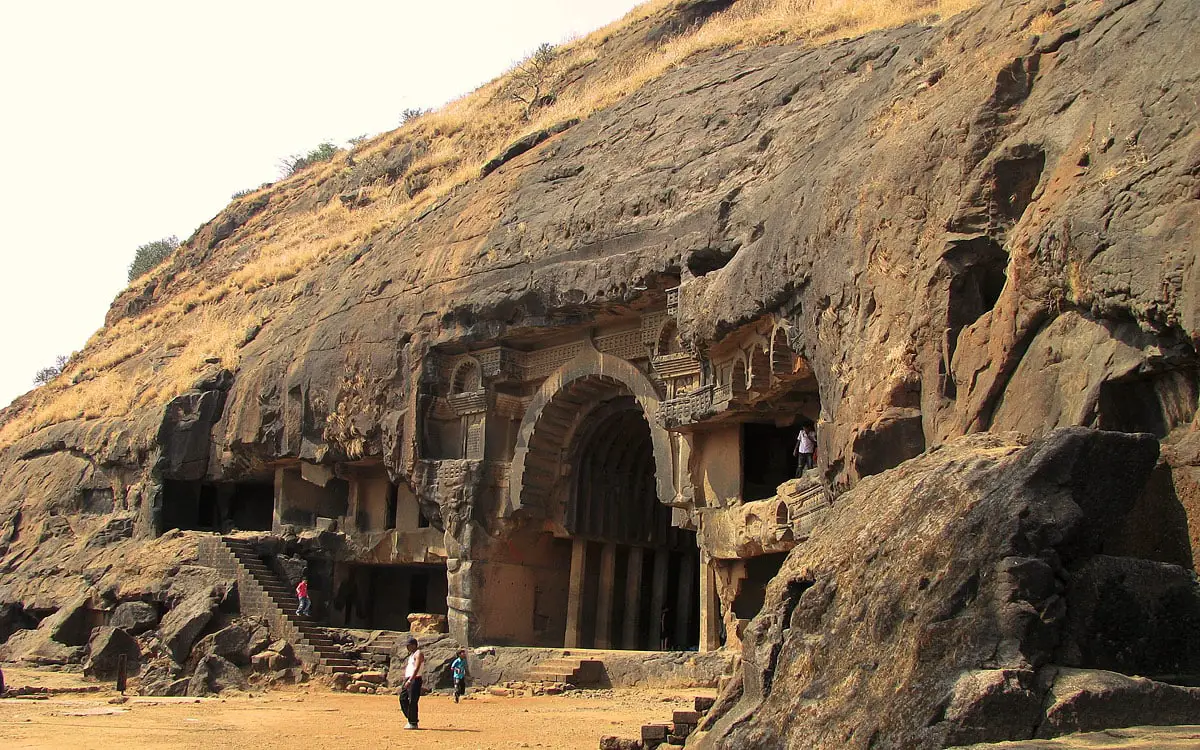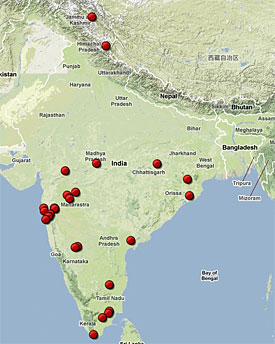World 🢖 Asia 🢖 India 🢖 Himachal Pradesh
Buddhist shrines 🢔 Religious architecture 🢔 Architectural wonders 🢔 Categories of wonders
Wonder
Tabo Caves
 In short
In short
Many centuries ago the cliffs above the ancient Tabo monastery have been hollowed out by several caves – Tabo Caves. These artificial cavities served and still serve as dwellings for monks during the harsh winters of Himalaya.
 36.3%
36.3%
GPS coordinates
Location, address
Age
Religion
Map of the site
If you see this after your page is loaded completely, leafletJS files are missing.
 In detail
In detail
Legendary monastery
Tabo monastery was founded more than 1000 years ago, in 996 AD. The ancient part of this monastery resembles a fortress, made of sand and clay. There is a reason for this – Tabo was often attacked by gangs of nomads and enemy armies. There are some 50 lamas in Tabo currently.
For many centuries Tabo is one of the most important monasteries and learning centers for Tibetan Buddhists. The premises of the monastery are covered with countless frescoes – nearly all chambers are lavishly adorned with exquisite paintings. Especially showy is the beautiful cobalt blue color. Due to these paintings Tabo Monastery often is nicknamed – “Ajanta of the Himalayas” – after the beautifully painted Ajanta Caves in Maharashtra.
It was here where one of the great sagas of the 20th century started. Several German alpinists were captured here by Brits in 1939. Germans escaped in mountains and later the adventures of one of them – Heinrich Harrer – were described in the book “Seven Years in Tibet”.
Caves
Sheer conglomerate cliffs above the monastery and village have a series of artificially excavated caves, well visible from the village. They have been made in comparatively brittle rock and are constantly decaying.
It is not completely clear when started the tradition of building such caves – but it is known that caves are very old. Tabo is not the only place with such caves in Spiti valley – there are more caves upstream.
One of Tabo Caves was used as an assembly hall for monks initially. Other caves had different use – mainly serving as dwellings. There are found traces of herds, seats, grain storage sites. Some caves have built structures in the front, thus turning them into houses.
Nowadays some caves still are used according to their initial purpose. Flags at several caves denote that there is somebody meditating inside.
Unfortunately, the caves closer to the village have been used as toilets lately.
There is controversial information about paintings in these caves. While some sources (1) mention that there is no sign of any paintings, other sources mention dim traces of ancient paintings. Walls of caves are not covered with plaster – thus there is less likelihood of the existence of such paintings.
Near Tabo there is also a possible dwelling of paleolithic man in a cave – this cave, in fact, is a natural arch.
References
- Christoph Cüppers, Short Remarks on the Caves at Tabo in Spiti.
Tabo Caves are included in the following article:
 Linked articles
Linked articles

Buddhist shrines
Buddhism is one of the world religions and at the same time is a spiritual philosophy with diverse traditions, beliefs, and practices. There exists a rich tradition of architecture expressed in Buddhist temples and monasteries.

Rock-cut architecture and sculptures
Rock-cut architecture is a very ancient form of architecture – the oldest structures are more than 5 thousand years old. The resistivity of the natural stone and the constant climate inside these structures has preserved many art values around the world.

Wonders of India
India is the seventh-largest country in the world by area, and, naturally, such a large area contains a huge amount of exciting attractions…
Wondermondo considers that India is the second richest center of architectural heritage in the world after Europe and maybe no single country in the world can match it in this respect.
 Recommended books
Recommended books
India Unveiled: Spirit, Tradition, People
This is the one book you need to understand the spirit of India. Internationally acclaimed as the best book of its type on India, this sixth expanded, revised edition of the multi-award winning book India Unveiled: Spirit, Tradition, People by Robert Arnett truly reveals the diversity and sacredness of the oldest continuously living civilization on earth.
India: A Sacred Geography
A spiritual history of the world’s most religiously complex and diverse society, from one of Harvard’s most respected scholars.



